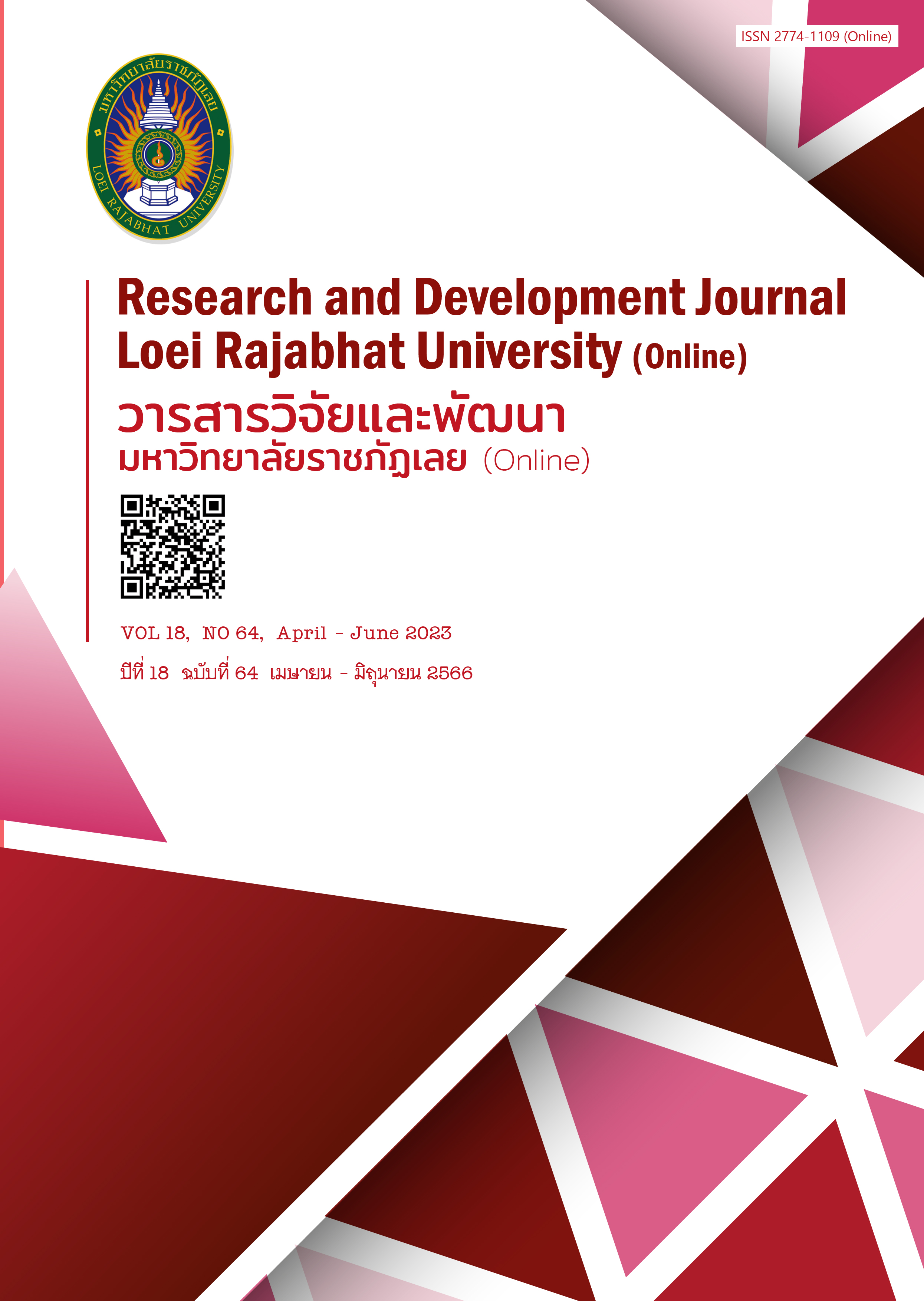Factors Influencing Customers’ Patronage of the Service of Korean Restaurants in Bangkok and Vicinity
Keywords:
customers’ patronage, Korean restaurants, Bangkok and vicinityAbstract
The objective of this research was to study the factors influencing customers’ patronage of the service of Korean restaurants in Bangkok and vicinity. The sampling method was randomly collected until 385 samples. The data collection tool was an online survey questionnaire. The statistics employed for data analysis were percentage, mean, frequency distribution, standard deviation, multiple regression analysis from the results of the linear regression analysis in the form of a multiple regression analysis. The results showed that, at the statistical significance level of .05, attitude and perceived value factors influencing customers’ patronage of the service of Korean restaurants in Bangkok and vicinity were ranked first (B = 0.497), followed by the factors of physical evidence and presentation (B = 0.153) and service process factors (B = 0.145), respectively.
References
กัลยา วานิชบัญชา. (2555). สถิติสำหรับงานวิจัย (พิมพ์ครั้งที่ 6). กรุงเทพฯ: ศูนย์หนังสือจุฬาลงกรณ์มหาวิทยาลัย.
โกวิท ไกรศรินทร์. (2555). ส่วนประสมการตลาดบริการที่มีผลต่อผู้บริโภคในการเลือกใช้บริการร้านอาหารในอำเภอเมืองราชบุรี (วิทยานิพนธ์ปริญญามหาบัณฑิต). มหาวิทยาลัยเชียงใหม่, เชียงใหม่.
พิชญ์ยุทธ ศุภภัทรนนท์. (2561). ปัจจัยที่มีผลต่อความพึงพอใจในการให้บริการผับและร้านอาหารของผู้ใช้บริการในเขตกรุงเทพมหานคร (วิทยานิพนธ์ปริญญามหาบัณฑิต). มหาวิทยาลัยมหิดล, กรุงเทพฯ.
พินทุม รุ่งทองศรี. (2558). ปัจจัยที่ส่งผลต่อการตัดสินใจใช้บริการภัตตาคารอาหารเกาหลี บอนชอน ชิคเก้น (BonChon Chicken) ในเขตกรุงเทพมหานคร (วิทยานิพนธ์ปริญญามหาบัณฑิต). มหาวิทยาลัยศิลปากร, กรุงเทพฯ.
ปภังกร รีดาชัชวาล, ไฉไล ศักดิวรพงศ์ และ สากล สถิตวิทยานันท์. (2556). การยอมรับและพฤติกรรมการเลียนแบบทางวัฒนธรรมจากสื่อบันเทิงเกาหลีของวัยรุ่นไทย. วารสารปัญญาภิวัฒน์, 5(1), 17-30.
สปริงนิวส์. (2565). ปีธุรกิจอาหารเสือ เติบโตต่อเนื่อง แบรนด์ ไทย แบรนด์ต่างประเทศตบเท้าลุ้นเค้ก. สืบค้นจาก https://www.springnews.co.th/news/820145
ศูนย์วิจัยกสิกร. (2553). กระแสเกาหลีฮิต กระตุ้นกระแสความนิยมเสื้อผ้าสไตล์เกาหลีสำเร็จรูป: แนะผู้ประกอบการไทยเร่งปรับกลยุทธ์ตามเทรนด์. สืบค้นจาก http://www.kasikornresearch.com/TH/K
Armstrong G. and Kotler, P. (2015). Marketing an Introducing. (2nd ed.). England: Pearson Education.
Antun, J.M. and Gustafson, C.M. (2005). Menu Analysis: Design, Merchandising and Pricing Strategies Used by Successful Restaurants and Private Clubs. Recipe Menu Development, 3(3), 81-101.
Banu, K. D. (2015). Relative Importance of Perceived Value, Satisfaction and Perceived Risk on Willingness to Pay More. International Review of Management and Marketing, 5(4), 211-220.
Chen, P-T. and Hu, H-H. S. (2010). How Determinant Attributes of Service Quality Influence Customer, Perceived Value: An Empirical Investigation of the Australian Coffee Outlet Industry. International Journal of Contemporary Hospitality Management, 1(22), 1021-1029.
Choi, J.G., Lee, B. and Mok, J. (2010). An Experiment on Psychological Gaze Motion: A Re-Examination of Item Selection Behavior of Restaurant Customers. Global Journal of Business Management and Information Technology, 6(1), 68-79.
Cheng, Y.-H. and Ho, H.-Y. (2015). Social Influence's Impact on Reader Perceptions of Online Reviews. Journal of Business Research, 68(4), 883-887.
Chun, B.S. and Park, N.H. (2021). The Effect of Service Marketing Mix on Relationship Quality and Revisit Intentions for Korean Restaurants in Vietnam. The Journal of Asian Finance, Economics and Business, 8(6), 1001-1012.
Expedia group. (2022). 10 Great Korean Dishes Top Must-Try Foods in South Korea. Retrieved from https://th.hotels.com/go/south-korea/great-korean-dishes
Kincaid, C.S. and Corsun, D.L. (2003). Are Consultants Blowing Smoke? An Empirical Test of the Impact of Menu Layout on Item Sales. International Journal of Contemporary Hospitality Management, 15(4), 226-231.
Kline, R.B. (2005). Principles and Practice of Structural Equation Modeling (2nd ed). New York: The Guilford Press.
Kotler, P. and Keller, K.V. (2011). Marketing Management. (15th global edition) Edinburgh: Pearson Education.
Lovelock, C.H. (1996). Principles of Service Marketing and Management (2nd ed.). Englewood Cliffs, NJ: Prentice-Hall.
Lovelock, C.H., Wirtz, J., and Chew, P. (2009). Essentials of Services Marketing. Singapore: Prentice-Hall.
Marketeer online (2020). Korean Series is One of the Key Success that Makes Kimchi Known All Over the World. Retrieved from https://marketeronline.co/archives/157279
Nunnally, Jc. (1978). Psychometric Theory (2nd). English: McGraw-Hill.
Parasuraman, A., Zeithaml, V. A., and Berry, L. L. (1990). Delivery Quality Service Balancing Customer Perceptions and Expectations. New York: Free Press.
Payne, A. and Frow, P. (2013). Strategic Customer Management: Integrating Relationship Marketing and CRM. Cambridge: Cambridge University Press.
Rama Y. (2000). Customer Satisfaction and the Services Marketing Mix. Journal of Professional Services Marketing, 21(1), 105-115.
Ryu, K., Lee, H. and Gon K.W. (2012). The Influence of the Quality of the Physical Environment, Food, and Service on Restaurant Image, Customer Perceived Value, Customer Satisfaction, and Behavioral Intentions. International Journal of Contemporary Hospitality Management, 24(2), 200-223.
Sweeney, J.C., Soutar, G.N. and Johnson, L.W. (1999). The Role of Perceived Risk in the Quality-Value Relationship: a Study in a Retail Environment. Journal of Retailin, 75(1), 77-105.
Yang, S.S. (2012). Eye Movements on Restaurant Menus: A Revisitation on Gaze Motion and Consumer. International Journal of Hospitality Management, 31(3), 1021-1029.
Downloads
Published
How to Cite
Issue
Section
License
Copyright (c) 2023 Research and Development Journal, Loei Rajabhat University

This work is licensed under a Creative Commons Attribution-NonCommercial-NoDerivatives 4.0 International License.
ข้อความที่ปรากฎในวารสารฉบับนี้เป็นความคิดเห็นของผู้เขียนแต่ละท่าน สถาบันวิจัยและพัฒนา มหาวิทยาลัยราชภัฏเลย และกองบรรณาธิการ ไม่จำเป็นต้องเห็นด้วยและไม่มีส่วนรับผิดชอบใดๆ
สถาบันวิจัยและพัฒนา มหาวิทยาลัยราชภัฏเลย ขอให้ผู้อ่านอ้างอิงในกรณีที่ท่านคัดลอกเนื้อหาบทความในวารสารฉบับนี้






